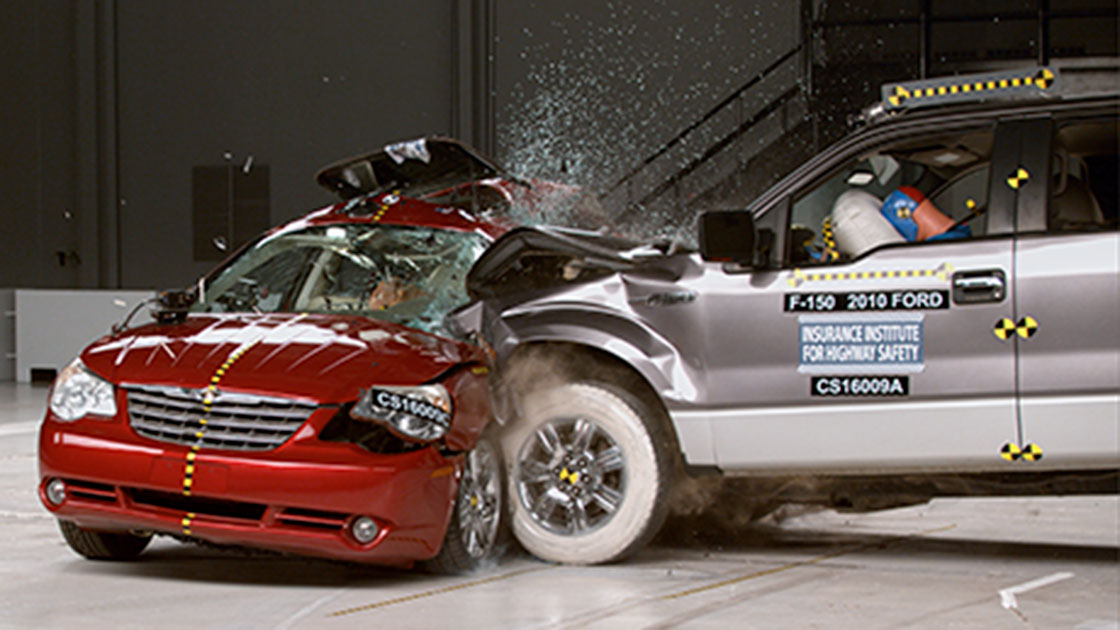Red light runners are killing more Americans as many cities wind down red light camera enforcement, according to the Insurance Institute for Highway Safety.
The IIHS reports that 811 people were killed in crashes caused by red light runners nationwide in 2016, an increase of 17 percent compared to the previous four-year average. The rise in red light-running fatalities coincides with a decline in the number of cities using camera enforcement to deter red-light running. Between 2012 and 2016, the number of red light cameras in operation fell 21 percent, according to IIHS.
While IIHS doesn't attribute all of the additional loss of life to the reduction in cameras, their research shows it is a factor. A 2016 IIHS study found that the fatal red-light running crash rate in cities that shut off their cameras increased 30 percent relative to similar cities that had not. In cities that had eliminated camera enforcement, the overall fatal crash rate at signalized intersections was 16 percent higher than in cities where the programs were maintained.
Cities are more vulnerable to political backlash against camera enforcement when the programs are poorly managed, which lends credence to accusations that the programs are about revenue, not safety. To be effective and politically sustainable, the programs have to be structured to maximize public safety and eliminate incentives for contractors to game the system.
Here's how the IIHS recommends setting up a red light camera program (with some additional suggestions from us):
1. Put the cameras at the most dangerous intersections
The first step is to assess where cameras are needed the most. Place the cameras where severe red light running crashes are most prevalent.
The camera locations should not be concentrated in communities of color. In Cleveland, research showed black residents received a disproportionate share of the city's camera fines, but in 2013 the city still proposed placing most of a batch of enforcement cameras on the predominantly black East Side. The next year residents voted to ban the cameras citywide.
2. Target the most dangerous violations
Red light running is dangerous because it causes T-bone crashes and collisions with pedestrians and cyclists at speed -- all of which are correlated with severe injuries and fatalities. These crashes are the result of motorists blowing straight through a red, which should be the focus of red light camera enforcement. Citations for turning right-on-red make sense in crowded urban areas, but not in more sparsely populated places.
3. Use standard signal timing
If drivers think the yellow phase is short, the camera program will be tarred as unfair. To ensure the yellow phase is standard, IIHS recommends consulting guidelines from the Manual on Uniform Traffic Control Devices or the Institute of Transportation Engineers.
4. Allocate revenue to safety programs
Once the costs of administering the program are covered, use the camera revenues to fund street safety programs.
5. Encourage public input
IIHS recommends cities establish an advisory stakeholder group, composed of law enforcement, residents, school officials, and victims' advocates, to help design the program and oversee changes.
6. Be transparent
Collect and publish data about how the program is functioning. IIHS cautions, however, that before-and-after comparisons between intersections with cameras and those without may not capture the full effect of the cameras, since there are often "spillover effects" where enforcement at some intersections improves compliance in general.
7. Don't create bad incentives for the vendor
Cities should pay the red light camera vendor based on the vendor's costs to implement the system, not based on the number of tickets issued.
8. Don't set up hair-trigger cameras
When the cameras are first installed, IIHS recommends a probationary period in which drivers are issued warnings instead of fines. IIHS also says cameras should not trigger a fine for drivers who disobey the red signal less than one-eighth to one-half of a second after the light changes.
9. Allow for due process
Put a system in place for people to contest violations and make it easily accessible to the public.
10. Sliding-scale fines and alternatives to payment for low-income drivers
A one-size-fits-all red light-running fine might not even register for a rich person, but for a poor person it can be a heavy burden exacerbating debt and poverty. In several northern European countries, fines are proportionate to income to create a fair incentive system. Sliding scale fines are rare in the U.S., but cities can also let low-income people forego fines and enroll in a safe driving class or other remedial program, like community service, instead.






